Nature Knows and Psionic Success
God provides
3 Easy Ways to Prioritize a Healthy Gut-Brain Connection

Simple steps for healthy communication between your brain and gut.
Key points
A healthy gut-brain connection may be a key to healthy mood and cognition.
Eating certain foods that prioritize a diverse microbiome may support gut-brain wellness.
Our gut immunity plays a major role in our gut health and may affect brain state, too.
Good sleep and nature exposure are great ways to keep our brains healthy, helping us prioritize gut-friendly decisions.
ChristopherCampbell/Unsplash + GDJ/Pixabay In years past, it was well-accepted that the brain and the body were separate, and that what happened in our bodies didn’t really influence our brains. But research in recent decades has convincingly demonstrated that this is anything but the case. One of the most powerful examples of this reframe revolves around the gut-brain axis , a stunning communication pathway that links what happens in our gut with the state of our brain and vice versa. This has led many to suggest that we may be able to improve our brain health, including our mental health, by improving the quality of the data that runs from our gut to our brain. Here are three of the most important ways this may be possible. 1. Prioritize a more balanced gut microbiome.
In your gut right now, you have trillions of bacteria communicating with your gut cells and influencing the immune and nerve cells living just below the gut lining. These bacteria make up a big part of what is called the gut microbiome , and it’s thought that their makeup may significantly influence overall gut health as well as the gut-brain connection. Some early research has drawn a connection between changes in the gut microbiome and a risk for brain conditions ranging from dementia to depression .
Though it’s too early to say with clarity exactly what may be best for the health of the gut microbiome, some basic steps we may all want to consider include prioritizing dietary fiber (found in whole grains, fruits and vegetables, and nuts and seeds) as well as polyphenols (plant nutrients that provide plants with anti- stress benefits and their vibrant colors), since eating more fiber and polyphenols are thought to help promote a healthy gut microbiome, and have been linked to better brain health. 2. Promote a healthier gut immune state.
With the majority of your immune cells based in and around your gut, it’s no surprise that the gut immune state may play a significant role in overall health. There are several connections between gut immune health and brain health. First, signals from the gut immune system could get into our bloodstream and make their way into our brains, where they could affect brain health. Second, gut immune signals could influence the vagus nerve (which has nerve fibers located right next to gut immune cells), carrying data to the brain that could affect mental and overall brain state.
While it’s tough to know exactly how individual aspects of our lifestyle may affect the gut immune state, it’s been proposed that too much stress could lead to damage to the gut lining, promoting an influx of molecules from the gut that could activate gut immune cells, leading to full-body inflammation (which has been linked to worse brain health in a number of studies). At a basic level, consuming a balanced diet rich in vitamins and minerals may help support balanced function of gut immune cells and the immune system overall. And certainly, it seems to be the case that the gut microbiome and the gut immune cells spend a lot of time conversing, so the above considerations for gut microbes are likely a good plan for our gut immune cells as well. 3. Set your brain up for gut-friendliness with good sleep and time in nature.
A key to caring for the gut-brain connection is remembering that it’s bidirectional: It goes both ways. And while it’s easy to talk about prioritizing gut health to promote brain health, it’s also important that we talk about how to prioritize brain health to promote gut health. Here, neuroscience provides some interesting insights.
In research conducted over the last decade, researchers have shown that our brain function (specifically our decision-making ) can be significantly influenced by lifestyle factors. For example, missing out on good sleep is linked to a stronger preference for sugary foods and, in adolescents, increased consumption of unhealthy food versus gut-healthy food. This suggests that optimizing our brain health with good sleep may help us make choices that promote gut health.
In another set of research, scientists have studied the effects of brief exposures to nature on decision-making, and found that even short exposures to nature photos was enough to influence people’s thinking. Specifically, they showed that looking at nature may help us to make less impulsive choices, which is exactly the type of thinking that may help us stick to foods that promote gut wellness, rather than falling victim to the standard ultraprocessed (but often more enticing) diet that has been linked to worse gut and brain health.
The ‘best way’ to keep your brain healthy and to optimise its output – 7 points to follow

WE KNOW that the food we eat directly impacts the health and function of our digestion, heart, liver, skin and more. So why not our brain as well? One expert recommended seven specific ways to support your brain power through diet.
What is omega 3 and why do we need it?
The brain is responsible for consuming around 20 percent of our daily calorie intake, which is a lot given it’s only 2 percent of our body weight, and its micronutrient needs are considerable and diverse. What our diet, or the ‘fuel’ we give our brain, consists of can have a significant impact on its structure, function and longevity, according to Clarissa Berry, Nutritionist for DIRTEA .
She explained: “The brain has ways to work around not getting enough of the correct nutrients, but this can lead to suboptimal functioning and can affect brain health in the long term.
“Improving our nutrient intake can optimize brain function, leading to improvements in brain health, cognition and mental health.
“Brain function is affected in less direct ways as well. Diet can affect our immunity, sleep , digestive health, energy and stress levels, all of which can impact cognition and emotional health.”
The best way to keep your brain healthy and to optimize its output, according to Clarissa, is to eat a wide variety of macro and micronutrients through fresh, whole, colourful and varied foods. Brain health: There are a number of simple ways you can optimise your brain’s output She added: “You can also support your brain with herbs and supplements , often called nootropics, which have active compounds that go the extra mile towards optimising brain function and improving mental health.”
Seven ways to support your brain through diet, according to Clarissa:
Omega 3s are fatty acids that are essential for brain health as well as that of the body as a whole. The brain is made of approximately 70 percent fat, so getting sufficient fat in your diet is extremely important to maintain brain function. The type of fat is also crucial. Omega 3s are important to keep your brain cell membranes flexible and fluid, which helps to keep your brain running smoothly, improves memory and increases brain longevity.
You can get omega 3 fats from wild salmon and other oily fish such as sardines, halibut and mackerel, as well as from grass-fed beef and pasture-raised eggs. Some are also found in flax seeds, chia seeds and walnuts. Because it can be hard to get sufficient omega 3 through dietary sources only, supplementation is often worth considering, however always talk to a nutritionist or healthcare professional before beginning a new supplement.
DON’T MISS
[STUDY]
[INSIGHT]
[EXCLUSIVE]
Carbohydrates are important to provide energy to the body and brain, but it’s good to be careful with how you enjoy them. Sources of carbohydrates such as bread, flour, grains, fruits and root vegetables turn to sugar inside the body and can therefore cause your blood sugar levels to ‘spike’. This temporary boost of energy can feel good but is always followed by the dreaded ‘crash’, when blood sugar dips below normal. The higher the spike, the bigger the crash. This isn’t good for your brain output, your energy levels or your hormones, but there are ways you can prevent it.
When you eat carbs, try to choose whole-grain versions which contain fibre and other nutrients that help to slow the release of sugar into the blood. Make sure to balance your meal with sources of fat and protein, which smooths the curve even further, making your energy last for longer and reducing the potential for a crash. It’s also a good idea to limit servings of sugar, sweets and chocolate and to enjoy these in moderation after a meal (containing lots of other nutrients) rather than alone.
Antioxidants are protective molecules that can prevent damage to cells by free radicals. Free radicals get produced as a natural byproduct of many body functions and also come from environmental toxins such as cigarette smoke and pollution. Getting enough antioxidants through your diet is one of the best ways to protect your brain from cellular damage, helping it to maintain optimal function and keeping it strong and healthy for as long as possible. They reduce inflammation and have been shown to support learning, memory, motivation and mood. Studies show that free radical damage is associated with diseases such as Alzheimer’s, Parkinson’s and other age-related neurological disorders.
The best place to get antioxidants is through a varied, colourful diet. Some top sources of antioxidants include berries, beans, dark chocolate or cacao, leafy greens, beetroot, nuts, herbs and spices. And here’s a pro tip: a medicinal mushroom called chaga (£29.99 from www.dirteaworld.com) is one of the most antioxidant-rich foods on the planet, with more antioxidants than 600 blueberries. Omega 3s are important to keep your brain cell membranes flexible and fluid By weight, the brain is approximately 75 percent water, while the body as a whole is 60 percent water. This demonstrates how crucial hydration is to the brain’s optimal function. Dehydration has been shown to directly impact cognitive performance, including the ability to learn, remember, reason and make decisions. Dehydration also significantly affects mood and energy levels. Try to drink at least two to four litres of water per day, including hot drinks.
Getting a little more specific now, but egg yolks in particular are a very rich source of choline, an essential nutrient with critical roles in the brain. Choline is used to create acetylcholine, a neurotransmitter involved in memory, mood and cognition. Unfortunately it is often deficient in our diets. Eggs are also nutrient powerhouses, providing protein and B vitamins among many other nutrients, which further support brain health. So don’t be afraid of those yolks.
Lion’s mane is the name of a medicinal mushroom that is a known ‘nootropic’, something that can enhance brain function. Studies have demonstrated its incredible benefits on brain health and cognition, even indicating its potential in the treatment and prevention of dementia.
Lion’s mane has the ability to […]
Lemon Balm Essential Oil May Enhance Glucose Uptake
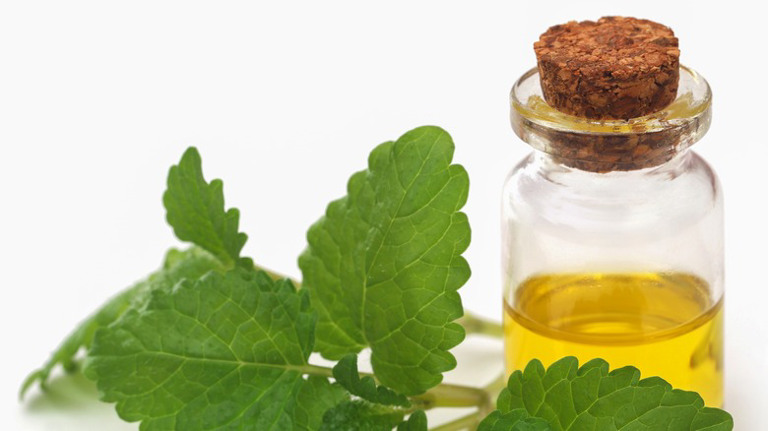
Cultures worldwide have used lemon balm to treat various health conditions and mood problems since ancient times (per Mount Sinai ). Botanically named Melissa officinalis, the sweet-smelling herb is also commonly called Melissa, sweet balm, and bee balm, according to RxList .
Pre-medieval cultures used lemon balm to treat venomous stings and bites and heal wounds. People in the Middle Ages used it to encourage appetite and ease symptoms of indigestion like cramps, gas, and bloating. The Herb Society of America says lemon balm has served many medicinal purposes since ancient Greece, but researchers continue to unlock this multifaceted plant’s health benefits.
Mount Sinai confirms that ancient cultures were right to believe lemon balm can relieve stress, reduce anxiety, promote sleep, and help heal sores. And this flowering herb shows potential as a brain-boosting nootropic that may improve memory and cognition (via Supplements in Review ) But what, exactly, is lemon balm? And can lemon balm essential oil help manage symptoms of diabetes ?
Lemon balm is a sweet, tart, flowering herb in the mint family. According to Supplements in Review , lemon balm has been used in plant medicine since ancient Greece, more than 2,000 years ago. This native European plant can now be found in private and commercial gardens for bee colonies, aromatherapy, herbal remedies, cosmetics, and skincare. The lemon-scented leaves are used in medicine and cooking and may provide calming sedative effects and combat viruses and bacteria (per WebMD ).
Lemon balm’s anti-inflammatory properties make it good for healing cold sores when applied topically. Also, a 2010 study in the British Journal of Nutrition shows low doses of lemon balm essential oil can serve as a hypoglycemic agent for type 2 diabetes , possibly due to enhanced liver metabolism and glucose uptake.
Healthline describes essential oils as compounds extracted from plants via distillation or cold-pressing. Oils obtained from plants using chemical processes or any method other than distillation or cold-pressing are not true essential oils. Essential oil extracts contain the concentrated essence of the plant, including flavor and aroma.
Essential oils are commonly applied to the skin or diffused into the air and inhaled through the nose and mouth. Essential oils are highly absorbable when applied topically and are rapidly metabolized, as shown in a 2015 study published in the Journal of Pharmacy and Pharmacology. It May Also Help Manage Diabetes Symptoms
Medical News Today cites a 2015 mice study that suggests lemon balm may help balance blood sugar. A 2020 animal study in the Journal of Ethnopharmacology backed these findings, showing evidence that lemon balm can reduce visceral body fat and lower insulin resistance in obese female mice.
Human trials have shown lemon balm extract is safe and effective for treating symptoms in patients with type 2 diabetes. A 2018 randomized, double-blind, placebo-controlled study published in the Journal of Ethnopharmacology shows lemon balm can balance lipid ratios and lower triglyceride to HDL ratios, reducing the chances of developing cardiovascular disease.
The results of a similar 2020 human trial published in Phytotherapy Research support this conclusion. This study concluded that lemon balm extract improves lipid profiles, helps maintain glycemic control, and reduces inflammation in type 2 diabetes.
According to Medical News Today , these findings suggest that lemon balm essential oil can help manage symptoms of diabetes when applied to the skin or used in a diffuser; and human trials show taking lemon balm extract orally may offer even more significant benefits for those with type 2 diabetes (per Complementary Therapies in Medicine ).
While many publications warn against taking essential oils internally, the FDA has approved lemon balm essential oil as safe for human consumption. Dr. Eric Zielinski advises taking essential oils in a capsule or mixing them with one tablespoon of a carrier oil like coconut or olive oil before swallowing (via Natural Living Family ).
Read this next: Scary Symptoms That Aren’t As Serious As You Think
Beyond the gut-brain axis
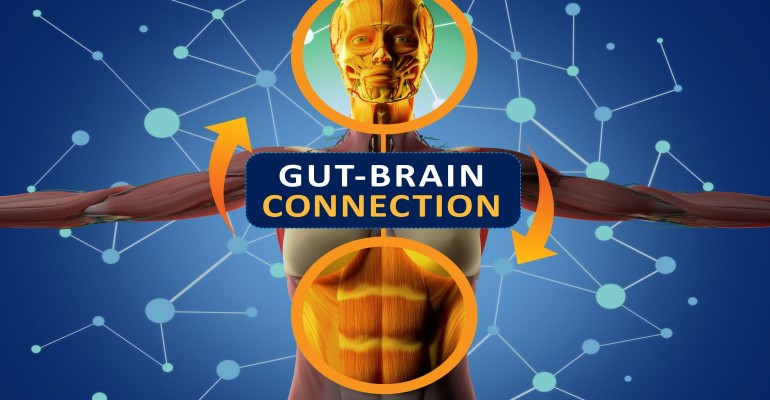
Hearing about the gut-brain axis—the bidirectional health pathway that sends signals between the central nervous system (CNS) and enteric nervous system (ENS)—is becoming increasingly common. Now, as more people begin listening to their gut, it makes sense that scientists are exploring a slew of gut axes that highlight the connections or pathways between the microbiome of the gut and other major body systems such as the lungs, immune system and skin.
Consumers are beginning to understand a direct line connects the gut not just to the brain, but also to most of the other major organs in the body. And suppliers and manufacturers are in lockstep with solutions to help consumers meet their wellness goals.
Vicky Mak, ChildLife Essentials’ technical writer, hinted at a gut-brain-immune connection, saying the gut plays a pivotal role in supporting the mental and physical health of children. “The gut-brain axis is deeply intertwined with the immune system, which defends and protects the brain and
gut from environmental substances; researchers have identified [this] … as the brain-immune-gut triangle.” 1
For starters, she said the first 12 months of life are the most important period of rapid brain development and dynamic microbial colonization of the gut. 2
“In this regard, the gut acts like an ‘information superhighway.’ The microbiota in the gut regularly comes into contact with sites in the gut called the gut-associated lymphoid tissues (GALT), which contain many immune cells critical for supporting immune homeostasis, Mak said. 3 “The GALT has important roles in protecting against pathogens and regulating nutrient intake.”
She further noted ongoing research suggests the gut-immune system is important in the development of autoimmune diabetes. “The gut-immune system has a key role in controlling insulin-specific immunity induced by dietary insulin,” she said. 4 “Indications for aberrant function of the gut-immune system have been reported in type 1 diabetes, such as intestinal immune activation and increased intestinal permeability.”
For those new to gut-organ theory, a gut-immune axis may seem far-fetched. Imagine it as “a line connecting two distant entities to each other,” quipped Paul Schulick, a master herbalist and formulator at For the Biome. He maintained that a deeper understanding of the gut-immune relationship reveals the distance is closer than assumed.
“[The] immune system is virtually inseparable from your gut,” he explained. “The organs [have] a symbiotic relationship and communicate through receptors. They support each other’s functioning to support the health of the entire body. Your gut and your immune system need each other!”
Schulick likened the gut-immune dynamic to weeding a garden: “Your immune system supports the gut by helping it to maintain a balance of beneficial microbes (good bacteria), and by discriminating and eliminating harmful bacteria.”
The phrase “healthier-looking skin starts from within” has never been truer. A more recent discovery than some of the other gut-organ relationships, the gut-skin axis links healthy skin to a balanced gut microbiome—the skin has its own microbiome, but it also appears to be influenced by the microbiome in the gut.
“There has been substantial research and data showing the direct relationship between the health of the gut and that of the skin,” reported Stuart Ashman, CEO of SkinBio Therapeutics. 5 “Just think what happens when we eat foods that we’re allergic to and the resultant hives we see on the skin surface.”
According to Ashman, naturally reversing skin damage starts with healthy microbiota benefitted by select strains of “friendly bacteria” communicating through the gut-skin axis to reveal healthy skin. 6
“The health of the gut is more interactive with the rest of the body than just sending information back and forth,” he noted. “I’d say it was more like a conductor in an orchestra in directing the body’s health.”
This excerpt was taken from a longer feature in the “Diverse microbiomes and digestive health ” digital magazine. Click the link to access both.
Brenda Porter-Rockwell has a diverse background writing about nutraceuticals and healthy foods for a variety of trade and consumer publications, both print and online. She lives in North Carolina and can be reached at brenda@writeonporter.com .
References
1 Szabo A and Rajnavolgyi E. “The Brain-Immune-Gut Triangle: Innate Immunity in Psychiatric and Neurological Disorders.” Curr Immunol Rev. 2013;9(4):241-248.
2 Ihekweazu FD and Versalovic J. “Development of the Pediatric Gut Microbiome: Impact on Health and Disease.” Am J Med Sci. 2018;356(5):413-423.
3 Mörbe UM et al. “Human gut-associated lymphoid tissues (GALT); diversity, structure, and function. ” Mucosal Immunol. 2021;14(4):793-802.
4 Vaarala O. “The Gut Immune System and Type 1 Diabetes.” Ann N Y Acad Sci. 2002;958(1):39-46.
5 Sinha S et al. “The skin microbiome and the gut-skin axis.” Clin Dermatol. 2021;39(5):829-839.
6 Salem I et al. “The gut microbiome as a major regulator of the gut-skin axis.” Front Microbiol. 2018;9:1459.
Study: 150 Minutes of moderate exercise a week can help reduce risk of COVID-19 infections

( Natural News ) Regular exercise is key to your overall well-being because it can help you maintain a healthy weight.
According to a study, exercising for at least 150 minutes or two and a half hours every week can also help reduce your risk of getting infected with the Wuhan coronavirus (COVID-19).
The study findings were published in the British Journal of Sports Medicine . Regular exercise and COVID-19 prevention
According to research, physical activity is important when it comes to reducing the chance of severe illness because it helps boost your immune system.
Experts also believe that staying fit can help protect against COVID-19 after reviewing over a dozen international studies. The data revealed that 150 minutes or more of moderate exercise like brisk walking or dancing every week reduced the risk of a coronavirus infection by 11 percent. (Related: Study: Walking for an extra 10 minutes daily can increase your life expectancy .)
The same protective effect was observed in those who exercised for at least 75 minutes or more of vigorous exercise weekly. Activities include running and swimming or sports like football and rugby.
Those who exercised regularly were also at least 43 percent less likely to die or get severe COVID-19 compared to their peers.
The research team hopes that their findings could help guide “a public health strategy” that would encourage people to exercise regularly. The experts believe that regular physical activity helps the body fight off COVID-19 before it penetrates the body by increasing white blood cell and antibody counts. Exercise as a public health strategy
Data suggests that the pandemic was linked to a significant increase in the number of people exercising in general. According to the Office for National Statistics (ONS), the average Briton now spends 25 minutes per day exercising, which is six minutes more than in 2014 and 2015.
The National Health Service (NHS) advised people to engage in moderate activity for 75 minutes. Alternatively, people can exercise vigorously for at least 150 minutes per week to maintain overall health.
In the latest study, researchers analyzed 16 studies carried out in Brazil, Canada, Iran, Palestine, South Africa, South Korea, Spain, Sweden and the United Kingdom.
The studies were conducted between November 2019 and March 2022. Only studies that used polymerase chain reaction (PCR) tests and had exercise data were included in the analysis.
Overall, more than 1.8 million participants were involved in the study. The physical activity levels of the participants were recorded through self-reported questionnaires or data from wearing heart rate monitors and other activity-tracking devices.
Most of the studies controlled for other factors, like obesity and smoking , that could affect coronavirus infection. Overall, the studies suggest that exercising regularly reduced the risk of infection by 11 percent and serious illness, defined as needing intensive care or a ventilator, by as much as 34 percent.
Physical activity also helped reduce the chance of hospitalization from all causes by 36 percent and death by 43 percent.
Yasmin Ezzatvar, a nurse at the University of Valencia who lead the research team, explained that the findings confirm how effective regular physical activity is at protecting against coronavirus. “Regular physical activity seems to be related to a lower likelihood of adverse COVID-19 outcomes,” wrote the study authors.
The results also emphasized the protective effects of regular exercise as “a public health strategy, with potential benefits to reduce the risk of severe COVID-19 .”
The research team explained that exercise could help reduce the chance of getting severe coronavirus by reducing the chance of developing diabetes , obesity and high blood pressure. These three conditions have been linked with reacting more strongly to the virus.
Data is scarce on why exercise limits the chances of actually catching COVID-19, but the researchers think physical activity could help increase the body’s immune defense.
Other studies suggest that exercise helps the body produce more antibodies and white blood cells, which are key to the body’s response to infection. Physical activity also reduces the release of the stress hormone cortisol that can reduce the number of disease-fighting white blood cells produced in your body. How does regular exercise benefit your immune system?
A healthy immune system helps protect you from different disease-causing bacteria, viruses and other pathogens.
Here are several ways physical activity can help boost your immune system : It can reduce your risk of developing heart disease, diabetes and other diseases
Exercise can help reduce cardiovascular risk factors, prevent or delay the development of Type 2 diabetes , increase high-density lipoprotein (HDL) or “good” cholesterol and lower resting heart rate.
Having one or more of these conditions may make it more difficult for your immune system to protect you against infections and viral illnesses like COVID-19. It can reduce stress and other conditions like depression
Working out after a long day can help reduce your stress. Specifically, moderate-intensity exercise can slow down the release of stress hormones while also positively influencing the neurotransmitters in your brain that affect mood and behavior.
Additionally, regular physical activity may offer a protective benefit against stress. This means that if you exercise regularly, you can proactively handle stressors with more resilience and a better mood.Data suggests that stress and depression can significantly affect the regular function of your immune system, which can cause a low chronic inflammation status that favors infections, diseases and other illnesses. It can help you sleep better If you have trouble sleeping at night, exercising regularly can help improve both sleep quantity and quality. This is good because sleep loss can negatively affect certain parts of the immune system.Study findings suggest that a higher risk of infection and development of cardiovascular and metabolic disorders may be linked to a reduction in antibodies and the production of inflammatory cytokines in those with a modest amount of sleep loss.Improve your health condition and protect yourself against COVID-19 by engaging in moderate exercise for at least two hours and 30 minutes every week.Watch the video below for tips on how to become self-disciplined in health fitness . No compatible source was found […]
Nootropics May Improve Mental Focus And Concentration
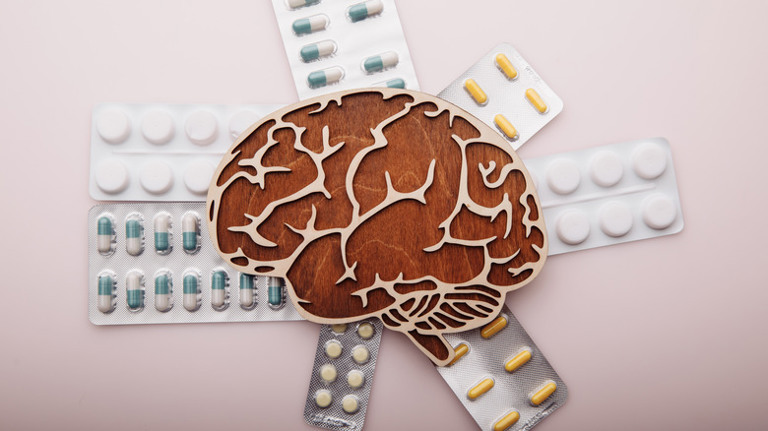
“Limitless,” the popular sci-fi thriller featuring Bradley Cooper, tells the story of a struggling writer who achieves success after taking NZT-48, a pill that increases brain capacity. NZT-48 doesn’t exist in real life, but some drugs and supplements can boost brain power, creativity, attention, and memory.
We’re talking about the so-called “smart pills,” or nootropics, such as caffeine, piracetam, L-theanine, and Panax ginseng. Another example is modafinil, a central nervous system (CNS) stimulant prescribed for sleep disorders. In one study , healthy volunteers who took either 100 or 200 milligrams of the drug experienced improvements in reaction time, visual memory, decision making, and mental focus, reports the journal Psychopharmacology.
Nootropics are herbs, amino acids, stimulant agents, or medications that support brain function. Caffeine, the most widely used nootropic, may enhance alertness, task performance, processing speed, and other markers of cognitive performance, according to recent evidence published in Cureus. Other smart drugs can boost your energy and stamina or lift your mood . That said, let’s take a closer look at the science behind nootropics and their potential benefits.
Many college students and business professionals turn to nootropics when dealing with mentally demanding tasks. Proponents say that nootropics reduce mental fatigue and improve concentration, making it easier to stay focused. “I would not give them up willingly,” entrepreneur Erin Finnegan told ABC News . “The additional focus that I can have with them, yes, it does sustain the speed I am going at now and the many things, I would have to take a couple [of] things off my plate if I wanted to keep going without them,” she added. Some in Silicon Valley take more than 40 pills daily in an attempt to get a mental edge.
These products contain more or more ingredients that are supposed to boost cognitive performance. For example, L-theanine — a naturally occurring amino acid — may improve attention, reaction time, working memory, and task accuracy, according to a recent study published in the Journal of Medicinal Food. As the researchers note, this compound also promotes the formation of new neurons and can slow down cognitive decline .
The same goes for piracetam, a synthetic drug prescribed to those with dementia, dyslexia, and memory problems. This medication is also used as a nootropic due to its ability to improve brain performance, says MedicineNet . Piracetam and other compounds have proven benefits, but they’re often misused or abused, which increases the risk of side effects, reports a 2021 survey featured in Brain Sciences. They Can Also Reduce Anxiety And Stress
There are different types of nootropics on the market, and each has distinct properties. Panax ginseng, ashwagandha, L-theanine, and other smart drugs are classified as adaptogens because of their ability to help the body cope with stress. Ashwagandha, an adaptogenic herb, can reduce stress and anxiety while improving memory, reports a 2019 study published in Cureus. Over time, it may enhance cognition and mental well-being, leading to a better quality of life.
Similarly, ginseng can improve your body’s response to stress and prevent depression. What’s more, it has protective effects on the heart and brain and may benefit people with certain disorders, such as arthritis and diabetes, suggests a 2017 review featured in the Journal of Ginseng Research. In another study appearing in the same journal, this plant was shown to reduce elevated triglyceride levels, a common side effect of chronic stress. Its effects kicked in within six weeks of treatment, according to the report.
Nootropic supplements may also contain Ginkgo biloba, a natural adaptogen that can reduce acute stress. Panax ginseng, by comparison, is more effective against chronic stress, suggests a 2003 study published in the Journal of Pharmaceutical Sciences. Lion’s mane has similar benefits, making it easier to manage stress, anxiety, and depression, says WebMD . These mushrooms can also boost immune function, reduce inflammation, and enhance mental function in older adults. But Are Nootropics Safe?
Most drugs and supplements, including nootropics, carry potential side effects and may not be safe for everyone. The risk of adverse reactions is even higher when it comes to pharmaceutical drugs, which are often misused. For example, piracetam may cause a sense of unease or distress, memory loss, indigestion, or dizziness, according to 2015 research published in the journal Innovations in Clinical Neuroscience. Armodafinil, a nootropic that promotes wakefulness, could give you headaches, whereas citicoline — a synthetic form of choline — can lead to fatigue, muscle aches, tremors, or insomnia. In some cases, these drugs may cause psychosis, hypomania, paranoia, movement disorders, and other serious complications.
Natural nootropics are not necessarily safer. Caffeine, for instance, can trigger or exacerbate anxiety and affect your sleep, warns MedlinePlus . Other side effects, such as restlessness, jitters, and headaches, are common as well. Ginseng is generally safe, but it may still cause high blood pressure, digestive distress, vaginal bleeding, or liver inflammation in some people, explains the National Capital Poison Center . Additionally, it can interact with other herbs or medications, including antidepressants, blood thinners, caffeine, and diabetes drugs.
Last but not least, note that dietary supplements are classified as food products and don’t require FDA approval . For this reason, it’s hard to determine their safety and efficacy. Additionally, many consumers use nootropic stacks, which can increase the risk of herb-drug interactions and adverse effects.
Read this next: All The Ways Mental And Physical Health Are Related
Study: Resveratrol, a compound found in grapes, can protect against cognitive decline

( Natural News ) Several studies have found that resveratrol, a compound found in grapes, berries, peanuts and red wine, can help protect brain cells by stimulating the destruction of specific proteins .
A recent study published in the Journal of Neuroinflammation showed that resveratrol supplementation reduced cognitive and functional decline in patients with mild Alzheimer’s disease.
Resveratrol is a natural substance produced by several types of plants as a response and defense against stress, fungi, toxins or ultraviolet radiation. Because of its protective nature, resveratrol is classified as a flavonoid antioxidant and has been the subject of much scientific scrutiny for its health-promoting qualities.
One such quality is its ability to support brain and nervous system health. Resveratrol is unique among antioxidants because it can cross the blood-brain barrier – meaning, it can be beneficial to neural health. (Related: A balancing act for Alzheimer’s: Researchers explore resveratrol’s antioxidant effects and the risks of alcohol consumption .)
According to Dr. David Sinclair, Harvard Medical School professor of genetics, resveratrol induces autophagy, which is a type of cellular defense that targets old, damaged proteins for destruction and recycling.
A 2018 study published in Biomedicine supported this claim as researchers found that resveratrol has neuroprotective effects . They reported that the compound promotes the clearance of beta-amyloid peptides, thus reducing beta-amyloid plaques in the brain.
Resveratrol was also found to reduce neuronal apoptosis, where a neuron orchestrates its own destruction. It also provides neuroprotection to healthy individuals and helps protect cognitive function into old age.
Moreover, a 2015 clinical trial on high-dosage resveratrol published in Neurology found that long-term resveratrol treatment of individuals with mild to moderate Alzheimer’s appeared to stop, or at least slow, the progress of the disease.
As per the study, in people who took resveratrol, the Abeta40 (main component of the amyloid plaques) levels remained stable, whereas the placebo group’s levels dropped. However, research team leader Dr. R. Scott Turner warned: “This is a single, small study with findings that call for further research to interpret properly.” Resveratrol offers joint support and helps ease arthritic inflammation
A clinical study conducted in 2018 found that resveratrol also offers a helpful company for people who are suffering from rheumatoid arthritis (RA).
Scientists found the compound to have anti-inflammatory properties, so a study was conducted to see if it could suppress arthritic inflammation in humans. The study involved patients with varying degrees of RA.
The controlled study published in Clinical Rheumatology included a group that was provided one gram of supplemental resveratrol with conventional treatment daily for three months, and another group that was given the conventional treatment only.
The investigators found that the resveratrol group experienced less swelling and tenderness in joints and also had lowered levels of pro-inflammatory substances, including the “usual suspects” such as C-reactive protein, matrix metalloproteinase-3, necrosis factor-alpha and interleukin-6.
It also helps to know how much resveratrol is right for a person and what could be the adverse effects if taken over the dosage prescribed.
Many clinical trials have used resveratrol up to five grams per day and found no toxic side effects. But in some research studies, amounts of over 2.5 grams a day caused side effects such as nausea, vomiting and diarrhea.
There has also been a paradoxical finding concerning resveratrol, with some studies suggesting that resveratrol can sometimes behave more like a pro-oxidant than an antioxidant – even causing DNA damage and oxidative stress.
Researchers speculated that this phenomenon seems related to the amount consumed – and perhaps to the individual’s age – with more research clearly needed. Before supplementing with resveratrol, consult a natural health practitioner to find the safest and most beneficial amount for you.
Learn more about natural treatments for Alzheimer’s at Alzheimers.news .
Watch the below video that talks about the benefits in brain power, health and longevity of resveratrol . No compatible source was found for this media.
This video is from the Health Ranger Report channel on Brighteon.com. More related stories:
Resveratrol and exercise found to attenuate fracture risk in mice with Alzheimer’s disease .
Resveratrol and exercise found to reduce risk of bone fractures in elderly patients with Alzheimer’s .
Cause-and-effect: Resveratrol’s ability to reduce blood pressure could explain why it’s a potent antioxidant .
Compound in red wine can slow down aging . Sources include:
NaturalHealth365.com
PubMed.NCBI.NLM.NIH.gov
Surprising study: Drinking up to three cups of ground coffee daily may help you live longer
Tags: #nutrition , antioxidants , brewed coffee , caffeine , coffee , food is medicine , functional food , goodfood , goodhealth , ground coffee , healthy drinks , longevity , nutrients , organics , prevention , superfoods , tips
This article may contain statements that reflect the opinion of the author
( Natural News ) Many people start their mornings with breakfast and a cup (or more) of coffee to feel energized. According to a study, coffee lovers may have more to celebrate when it comes to their daily cup of joe.
The findings of the decade-long study suggest that consuming up to three cups of coffee daily may help you live longer . Additionally, people who regularly drank coffee were at least 12 percent less likely to die.
The study was published in the European Journal of Preventive Cardiology and conducted by researchers from Queen Mary University of London and Semmelweis University in Hungary. Drink coffee brewed from ground coffee, not instant varieties
For the study, the research team examined the link between usual coffee intake and incidents of heart attack, stroke and death .
The study involved data from 468,629 participants of the UK Biobank with no signs of heart disease at the time of recruitment. The average age of the participants was 56.2 years and 55.8 percent were women.
The study found that regular coffee drinkers were at least up to a fifth less likely to get cardiovascular disease or suffer a stroke.
However, the researchers emphasized that the health benefits only come from consuming ground coffee, not instant varieties. They also advised that consuming more than three cups of coffee daily doesn’t have any good effects.
Coffee is one of the most consumed drinks worldwide, but earlier studies were contradictory when it comes to its possible benefits or potential adverse effects.
Coffee contains caffeine along with minerals and antioxidants . Research has linked coffee with reduced risk of cancer, dementia and Type 2 diabetes.
But other studies suggest that consuming coffee is linked to a greater risk of having high blood pressure and dying from heart disease. Coffee offers cardiovascular benefits
The current study suggests that coffee doesn’t increase blood pressure and offers benefits for your heart health .
Dr. Steffen Petersen, one of the study authors, explained that moderate coffee consumption “is not cardiovascularly harmful and may even be beneficial.” He added that the study “is the largest volume of research to date focusing on the cardiovascular effects of coffee consumption.”
The participants were followed for 11 years so the research team could study the differences between groups. Out of all the participants, 22.1 percent were non-coffee drinkers and 58.4 percent drank 0.5 up to three cups of coffee every day.
The rest of the participants (19.5 percent) consumed more than three cups of coffee daily.
The findings revealed that the people who consumed between 0.5 to 3 cups of coffee per day were 12 percent less likely to die compared to the non-coffee drinkers by the end of the study. Additionally, the group was 17 percent less likely to die from heart disease and 21 percent less likely to have a stroke compared to the non-coffee drinkers.
The participants who consumed up to three cups of coffee were less likely to be diabetic than the non-coffee drinkers. While the scientists didn’t examine why, data has found that caffeine can help suppress appetite, which could help lower rates of obesity and its related health conditions.
The participants who consumed more than three cups of coffee a day were not more likely to have high blood pressure, a concern often discussed in previous studies. However, those in this group had similar rates of mortality, heart disease and stroke to non-coffee drinkers. This implies that three cups of coffee a day was the maximum people can drink to gain health benefits.
The research team reported that they did not detect any increase in high blood pressure rates among the participants who consumed coffee daily, addressing concerns that caffeinated drink may cause the condition.
When the researchers studied health benefits based on the type of coffee the participants drank, those who used instant coffee, which was at least one-quarter of the group, did not have any health benefits. This could be because there are differences in how the coffee is made, suggested the researchers.
Instant coffee contains more caffeine and antioxidants. However, it also has twice as much acrylamide, a substance found in some foods that have been linked with a greater risk of cancer and nervous system damage.
The researchers explained that coffee’s “[favorable] effect” could be explained by changes in the heart structure among the participants who drank coffee.
After examining cardiovascular MRI scans, which were available for 30,000 of the participants, the data revealed that those who drank coffee had healthier hearts. The participants who drank a moderate or high amount of coffee had larger ventricles, which meant that they could pump out more blood. Other ways to improve your life expectancy
Aside from drinking ground coffee, here are some tips to improve your overall health and life expectancy . Eat more healthy plant foods
Ensuring that your regular diet is full of different plant foods like fruits, vegetables, beans, nuts, seeds and whole grains can help reduce disease risk and promote longevity.Research has found that there is a connection between a plant-rich diet and a lower risk of premature death, along with a reduced risk of: Brain deterioration Cancer Depression Heart disease Metabolic syndrome These benefits are linked to plant foods’ nutrients and antioxidants, such as carotenoids, folate, polyphenols and vitamin C.Many studies link vegetarian and vegan diets, which are naturally higher in plant foods, with a 12 to 15 percent lower risk of premature death. The same studies also showed that there is a 29 to 52 percent lower risk of dying from cancer or heart, kidney, or hormone-related diseases.Additionally, some data has found that the risk of premature death and certain diseases are greater the more you consume meat. But other studies report either nonexistent or […]
Boosting Neuron Formation Restores Memory in Mice With Alzheimer’s Disease
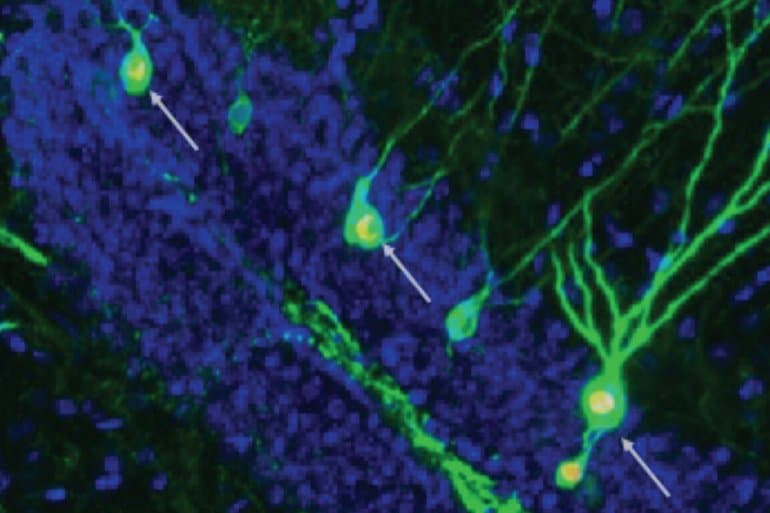
Summary: Increasing neurogenesis by deleting the Bax gene in mouse models of Alzheimer’s improved the animals’ performance in tests measuring spatial recognition and contextual memory.
Source: Rockefeller University
Researchers at the University of Illinois Chicago have discovered that increasing the production of new neurons in mice with Alzheimer’s disease (AD) rescues the animals’ memory defects.
The study, to be published August 19 in the Journal of Experimental Medicine , shows that new neurons can incorporate into the neural circuits that store memories and restore their normal function, suggesting that boosting neuron production could be a viable strategy to treat AD patients.
New neurons are produced from neural stem cells via a process known as neurogenesis. Previous studies have shown that neurogenesis is impaired in both AD patients and laboratory mice carrying genetic mutations linked to AD, particularly in a region of the brain called the hippocampus that is crucial for memory acquisition and retrieval.
“However, the role of newly formed neurons in memory formation, and whether defects in neurogenesis contribute to the cognitive impairments associated with AD, is unclear,” says Professor Orly Lazarov of the Department of Anatomy and Cell Biology in the University of Illinois Chicago College of Medicine.
In the new study, Lazarov and colleagues boosted neurogenesis in AD mice by genetically enhancing the survival of neuronal stem cells. The researchers deleted Bax, a gene that plays a major role in neuronal stem cell death, ultimately leading to the maturation of more new neurons.
Increasing the production of new neurons in this way restored the animals’ performance in two different tests measuring spatial recognition and contextual memory. The new study shows that boosting neurogenesis increases the number of newly formed neurons involved in storing and retrieving memories (arrows) in the hippocampus of mice with AD. Credit: Mishra et al. By fluorescently labeling neurons activated during memory acquisition and retrieval, the researchers determined that, in the brains of healthy mice, the neural circuits involved in storing memories include many newly formed neurons alongside older, more mature neurons.
These memory-stowing circuits contain fewer new neurons in AD mice, but the integration of newly formed neurons was restored when neurogenesis was increased.
Further analyses of the neurons forming the memory-storing circuits revealed that boosting neurogenesis also increases the number of dendritic spines, which are structures in synapses known to be critical for memory formation, and restores a normal pattern of neuronal gene expression.
Lazarov and colleagues confirmed the importance of newly formed neurons for memory formation by specifically inactivating them in the brains of AD mice. This reversed the benefits of boosting neurogenesis, preventing any improvement in the animals’ memory.
“Our study is the first to show that impairments in hippocampal neurogenesis play a role in the memory deficits associated with AD by decreasing the availability of immature neurons for memory formation,” Lazarov says.
“Taken together, our results suggest that augmenting neurogenesis may be of therapeutic value in AD patients.” About this neurogenesis and Alzheimer’s disease research news
Author: Press Office
Source: Rockefeller University Press
Contact: Press Office – Rockefeller University Press
Image: The image is credited to Mishra et al
Original Research: The findings will appear in Journal of Experimental Medicine
We hate spam and only use your email to contact you about newsletters. You can cancel your subscription any time.
Boost your heart, brain and digestive health with rutin, an antioxidant flavonoid

( Natural News ) Flavonoids like quercetin are well-known due to their health benefits, but other lesser-known flavonoids can also help boost your health and well-being.
Rutin (also known as rutoside) is an antioxidant flavonoid currently used in over 130 registered therapeutic medications. Despite its popularity as an ingredient for various medications, you probably have never heard of rutin.
Scientifically called quercetin-3-O-rutinoside, rutin is technically a quercetin molecule bound to a sugar molecule. Data suggests that rutin is a unique compound that offers many of the same health benefits as quercetin.
An increasing body of research highlights rutin’s impressive therapeutic and health-promoting benefits. Rutin helps support overall health and can also benefit the joints, as well as your circulatory and digestive systems. Rutin boosts cardiovascular health
Natural healers have long used rutin to improve blood circulation. Current data suggests that the flavonoid can help support cardiovascular health.
Experts believe rutin helps strengthen and increase the flexibility of arteries and capillaries. It has been credited with antiplatelet activity, meaning rutin may help protect you against deep vein thrombosis, heart attack and stroke by reducing the tendency of blood to clump together and form dangerous clots.
Data suggests that rutin may help perform a “preemptive strike” on blood clots by blocking disulfide isomerase, an enzyme that can trigger thrombosis.
Rutin also helps promote heart health by lowering blood pressure and reducing “bad” LDL (low-density lipoprotein) cholesterol while raising levels of “good” HDL (high-density lipoprotein) cholesterol.
Data from a study revealed that those with diabetes and high blood pressure experienced lowered LDL cholesterol levels after taking 500 mg of rutin a day. Rutin promotes intestinal health
Preliminary research suggests that rutin has the potential to promote gastrointestinal health.
In a review published in the journal Polyphenols in Human Health and Disease , data from animal studies revealed that pretreatment with rutin was effective in “ameliorating colitis, promoting colonic healing, boosting levels of glutathione, and cutting oxidative stress while also inhibiting the expression of inflammatory markers such as interleukin, COX and TNF-alpha.”
The benefits of rutin also extend to probiotic support.
In study findings published in the journal New Look to Phytomedicine , researchers reported that rutin helped increase populations of Lactobacillus , a beneficial gut bacteria.
The researchers added that continued study can help experts determine if rutin has potential as a future treatment regimen for gastrointestinal (GI) disorders such as inflammatory bowel disease (IBD). Rutin supports brain health
Data also suggests that rutin may benefit people with Alzheimer’s disease . Experts think that rutin can promote healthy brain function and help protect against neurodegenerative diseases by reducing pro-inflammatory cytokines and increasing antioxidant enzyme activity.
Data from animal studies has also revealed that the flavonoid helped improve memory deficits and inhibited acetylcholinesterase, an enzyme that breaks down acetylcholine, a neurotransmitter that is crucial for memory and learning. Rutin helps relieve joint pain
Rutin seems to be effective at staging “seek and destroy” operations on harmful free radicals. The flavonoid helps scavenge and neutralize these oxidative stress-creating molecules, which are linked to cell damage.
Rutin also boosts the effects of other powerful natural antioxidants already present in your body, like glutathione and superoxide dismutase. This is why natural healers often recommend rutin to relieve the pain and stiffness of inflammatory conditions like arthritis.
In research published in 2019 in the journal Bioactive Foods as Dietary Interventions for Arthritis , scientists reported that rutin was the “best antioxidant” of the natural class of compounds.
According to an older study published in the journal Biochemical Pharmacology , the antioxidative and anti-inflammatory properties of rutin helped reduce oxidative stress in people diagnosed with arthritis. The research team added that rutin was a “useful supporting pharmaceutical agent” that may help treat diseases caused by free radical damage. (Related: Quercetin: A flavonoid that fights COVID like hydroxychloroquine .) Incorporating rutin into your regular diet
Did you know that rutin was formerly called “vitamin P?” The phrase was used as a catch-all term for plant flavonoids.
Experts now know that flavonoids are not technically vitamins, but they are just as beneficial. Many nutritious fruits and vegetables contain rutin.
Buckwheat is one of the richer sources of rutin, but the following superfoods also contain the flavonoid: Apples
Apricots
Cherries
Cranberries Figs Grapefruits Lemons Limes Oranges For maximum benefit, eat apples unpeeled because most of their rutin is in the skin. Asparagus, passionflower tea and elderberry tea also contain rutin.You can also boost your intake of rutin with supplements. Natural healers usually recommend taking 250 mg of rutin two to three times per day. If you are not used to taking rutin supplements, consult a natural health practitioner. While rutin in food is considered safe, concentrated supplementary doses may cause minor side effects like flushing, headache and nausea.Rutin isn’t often in the limelight like quercetin and other more famous flavonoids, but it’s a beneficial compound that deserves more attention . Follow a balanced diet and eat foods rich in rutin like buckwheat and apples to boost your overall well-being.Watch the video below to know more about the health benefits of buckwheat . No compatible source was found for this media.This video is from the Holistic Herbalist channel on Brighteon.com . More related stories: Discovering the anti-obesity potential of quercetin . A flavonoid in fruits and vegetables found to prevent hepatitis B . Buckthorn, known for its antioxidant and anti-inflammatory properties, found to protect against acute lung injury . Sources include: NaturalHealth365.com
Neuroimaging study finds people who exercise more display an elevated brain response to reward
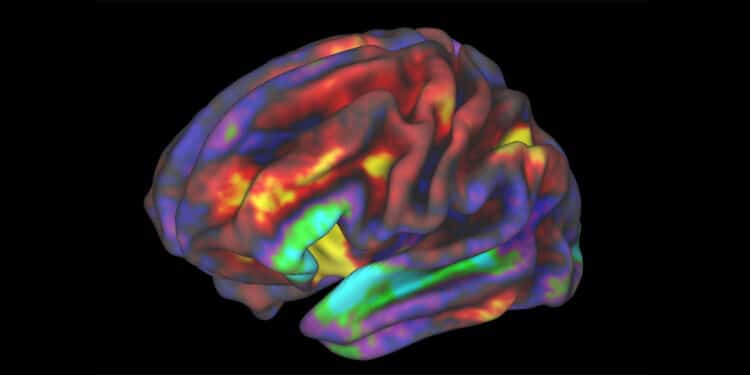
(Photo credit: Richard Watts/NIH Image Gallery) New research published in the journal Biological Psychology revealed that people who exercise more show increased brain activity when receiving an unexpected reward, specifically in the right medial orbitofrontal cortex. These findings may suggest that regular exercise alters the reward-circuit function, potentially reinforcing exercise behavior.
The physical and mental health benefits of exercise are widely known, yet finding the motivation to exercise can be a challenge. The authors of the study said that a look inside the brain may shed light on how people can be encouraged to maintain healthy exercise habits. More specifically, the dopamine reward system may play a role in motivating people to exercise, and the study authors proposed that regular exercise might alter the brain reward response.
“My background is in eating disorders research and those individuals frequently engage in very high amount of exercise. Before we explore the effects of exercise in that population, I wanted to study the relationship between exercise and brain reward processing, specifically dopamine-related reward processing,” said study author Guido K.W. Frank of the University of California, San Diego.
The researchers examined brain activity during a reward prediction error (RPE) task. An RPE is when a person receives an outcome of an event that is different than expected, causing dopamine neurons to send out a signal. This unexpected outcome could be positive, like receiving an expected reward, or negative, like having a reward unexpectedly taken away. The RPE is thought to reflect motivational salience — a cognitive process that drives a person’s behavior toward a positive outcome. The researchers speculated that people who exercise more often might show a stronger salience response in the dopamine system.
“The type of reward system response that we focus on responds to unexpected stimulus receipt – one could say excitement over receiving a reward unexpectedly, or unexpected stimulus omission, or disappointment over not receiving a reward that was expected,” Frank told PsyPost. “The stimuli we use are taste stimuli sucrose or water.”
A group of 111 healthy women participated in a task that evoked the dopamine-related RPE response. The task involved a classic sucrose taste-conditioning paradigm where participants learned to expect or not expect a sucrose reward. Throughout the task, functional magnetic resonance imaging (fMRI) was used to measure participants’ brain activity. Additionally, the women reported how much aerobic exercise they engage in on a weekly basis.
The researchers then analyzed the fMRI data, focusing on brain responses when participants either unexpectedly received a sucrose reward, unexpectedly did not receive it, or expectedly received it. For all three conditions, increased exercise was associated with a stronger response in the right medial orbitofrontal cortex (OFC). But after correcting for multiple comparisons, this heightened activity was only significant during the unexpected receipt condition.
“Higher amount of cardio/aerobic exercise was associated with higher brain response (orbitofrontal cortex, an area between the eyes that is important for valuation of rewards) when participants received the sugar stimulus unexpectedly, but did not affect the response to unexpected stimulus omission or disappointment,” Frank explained. “We believe that higher amount of exercise might change your brain that receiving a reward unexpectedly is more enjoyable.”
Notably, the right medial OFC is implicated in goal-directed decision-making and the calculation of reward value. The findings may suggest that exercise strengthens this circuitry, driving higher brain activity in the OFC. Alternatively, it could be that higher activity in the OFC reinforces engagement in exercise.
“It is therefore possible that individuals who engage in more aerobic activity may be intrinsically more responsive to salient stimuli and especially stimulus receipt,” the researchers wrote, “or alternatively, engagement in aerobic exercise has modulated brain activity and dopamine signaling, which may then reflexively reinforce and functionally maintain the exercise behavior.” The authors note that both of these explanations could be true.
Overall, the results suggest a link between aerobic exercise and the brain’s response to unexpected reward. “It is possible that exercise may in particular enhance the ability to value or enjoy stimuli or experiences, which could be important for intervening on psychiatric disorders,” the authors said, adding that an “altered brain salience response is characteristic of many psychiatric Illnesses.” If exercise is found to improve motivational salience, this could reveal potential treatment options for affected individuals.
Among limitations, the study was cross-sectional, and future longitudinal studies will be necessary to draw stronger conclusions from the data. Additionally, participants self-reported their exercise levels, and it is unclear whether the findings reflect the effects of overall activity level or true aerobic exercise.
“We cannot be certain what neurotransmitters are exactly involved and a larger study sample might have indicated that higher cardio exercise is also protective of disappointment,” Frank said. “It is possible that cardio exercise helps to be happier in being able to enjoy things more and be less disappointed when something does not work out the way you thought.”
“It is important that this was a study in healthy controls and their exercise amount was within normal limits,” he added. “Excessive exercise can get in the way of healthy living and will not have a positive effect on your wellbeing because you may lose much weight and/or develop an eating disorder.”
The study, “ Associations between aerobic exercise and dopamine-related reward-processing: Informing a model of human exercise engagement ”, was authored by Sasha Gorrell, Megan E. Shott, and Guido K.W. Frank.
The researchers created brain organoids — brain-like structures grown from human induced pluripotent stem cells — to investigate the effects of LSD at the cellular level. They found that LSD affected several processes, including DNA replication, neural pathfinding, and mTOR signaling.
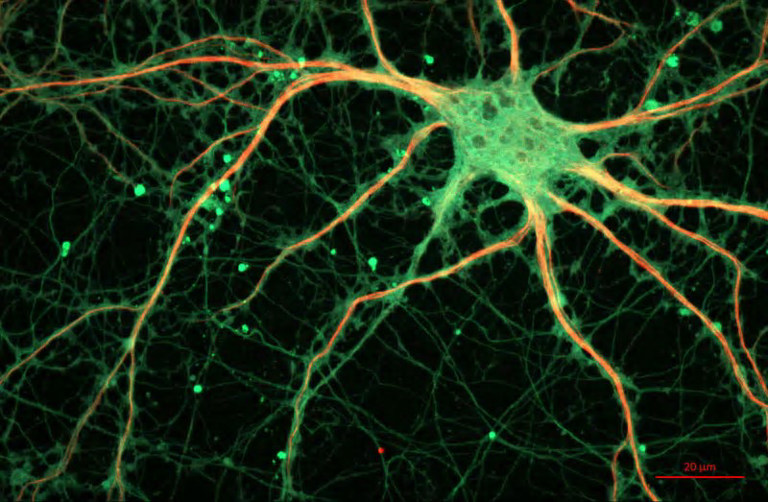
New research published in Experimental Neurology provides some initial evidence that the psychedelic substance known as LSD has nootropic properties. The study found that LSD increased markers of neuroplasticity in human brain organoids, increased novelty preference in rats, and improved memory performance in humans.
When combined with psychotherapy, psychedelic drugs have shown promise in the treatment of psychiatric conditions such as depression, PTSD, and addiction. But the cellular and molecular mechanisms involved in the therapeutic effects of psychedelics remains unclear.
Some research has indicated that psychedelic substances produce positive impacts, in part, because they promote neurogenesis and neuroplasticity. The authors of the new study were interested in better understanding whether the neuroplasticity induced by psychedelics could be harnessed to enhance learning and memory.
“My main research topics are the neural plasticity mechanisms underlying the cognitive benefits of sleep and dreaming. In the past decade I became interested in psychedelics because they produce dream-like states with major cognitive impacts,” said study author Sidarta Ribeiro, a full professor of neuroscience at the Brain Institute of the Federal University of Rio Grande do Norte
The researchers created brain organoids — brain-like structures grown from human induced pluripotent stem cells — to investigate the effects of LSD at the cellular level. They found that LSD affected several processes, including DNA replication, neural pathfinding, and mTOR signaling.
“The proteomic data from human brain organoids suggest that LSD regulates multiple processes involved in neural plasticity,” the researchers said. “Notably, we found significant LSD-induced changes in the mTOR pathway, a protein kinase involved in multiple neural plasticity events, acting as a hub between plasticity, learning, and memory.”
To examine the effects of LSD on hippocampus-dependent memory processes, the researchers had 76 rats undergo a novel object preference task several days after receiving a dose of LSD or an inert saline solution. Rats who had received LSD tended to spend more time exploring novel objects. But LSD did not appear to affect the overall time spent exploring objects in general.
“Our results show that LSD pre-treatment can substantially increase novelty preference in rats several days after dosing, with a significant single dose effect,” the researchers said. “The results imply that LSD-induced plasticity enhanced novelty-seeking.”
Ribeiro and his research team also investigated the effects of LSD on humans in a randomized, double-blind, placebo-controlled study. In the cross-over study, 25 healthy volunteers who had previously used LSD at least once (but had been abstinent from any psychedelic or other illicit drugs for at least two weeks) received 50 μg of LSD in one session and 50 μg of an inactive placebo in another session. The order of the sessions was randomized.
The morning after dosing, the participants completed a visuospatial 2D object-location task (an assessment of memory consolidation) and a Rey-Osterrieth Complex Figure test (a commonly used neuropsychological assessment of memory encoding and recall in which participants are asked to reproduce a complicated line drawing).
The researchers found that participants tended to have better performance on the memory tests the day after consuming LSD, compared to the day after consuming the placebo. “To our knowledge, this is the first study to show that LSD enhances subacute memory in humans,” the authors wrote in their study. However, they noted that the effects of LSD were not very strong, which might be a result of “the single, relatively low dose applied.”
Together, the findings provide evidence that “even a single dose of LSD can promote neural plasticity and enhance cognition in healthy adults, several days after the LSD administration,” Ribeiro told PsyPost. However, the researcher noted that “we still need to learn more about age differences, potential gender differences and the role of the context (setting) in the modulation of the effects.”
“Psychedelics have been demonized since the 1960s, and in the past decade they have returned to biology and medicine through the front door,” Ribeiro added. “However, the utility of psychedelics is not restricted to the treatment of patients with a pathological condition. They can also be very useful to improve the cognition of healthy individuals, i.e., they should be seen not just as medicine, but also as part of human life at large.”
The study, “Nootropic effects of LSD: Behavioral, molecular and computational evidence“, was authored by Isis M. Ornelasa, Felipe A. Cini, Isabel Wießner, Encarni Marcos, Dráulio B. Araújo,Livia Goto-Silva, Juliana Nascimento, Sergio R. B. Silva, Marcelo N. Costa, Marcelo Falchic, Rodolfo Olivieri, Fernanda Palhano-Fontes, Eduardo Sequerra, Daniel Martins-de-Souza, Amanda Feilding, César Rennó-Costa, Luis Fernando Tófolic, Stevens K. Rehena, and Sidarta Ribeiro.
Even simple exercise may help aging brain, study hints

High school students run at sunset as they practice for the track and field season in late February 2022 in Shawnee, Kansas. New research hints that even simple exercise just might help fend off memory problems. While physical activity helps keep healthy brains fit, it’s not clear how much it helps once memory starts to slide.
(AP Photo/Charlie Riedel, File)
by LAURAN NEERGAARD AP Medical Writer
New research hints that even a simple exercise routine just might help older Americans with mild memory problems.
Doctors have long advised physical activity to help keep a healthy brain fit. But the government-funded study marks the longest test of whether exercise makes any difference once memory starts to slide — research performed amid a pandemic that added isolation to the list of risks to participants’ brain health.
Researchers recruited about 300 sedentary older adults with hard-to-spot memory changes called mild cognitive impairment or MCI — a condition that’s sometimes, but not always, a precursor to Alzheimer’s. Half were assigned aerobic exercises and the rest stretching-and-balance moves that only modestly raised their heart rate.
Another key component: Participants in both groups were showered with attention by trainers who worked with them at YMCAs around the country — and when COVID-19 shut down gyms, helped them keep moving at home via video calls.
After a year, cognitive testing showed overall neither group had worsened, said lead researcher Laura Baker, a neuroscientist at Wake Forest School of Medicine. Nor did brain scans show the shrinkage that accompanies worsening memory problems, she said.
By comparison, similar MCI patients in another long-term study of brain health — but without exercise — experienced significant cognitive decline over a year.
Those early findings are surprising, and the National Institute on Aging cautioned that tracking non-exercisers in the same study would have offered better proof.
But the results suggest “this is doable for everybody” — not just seniors healthy enough to work up a hard sweat, said Baker, who presented the data Tuesday at the Alzheimer’s Association International Conference. “Exercise needs to be part of the prevention strategies” for at-risk seniors.
Previous research has found regular physical activity of any sort may reduce damaging inflammation and increase blood flow to the brain, said Alzheimer’s Association chief scientific officer Maria Carrillo.
But the new study is especially intriguing because the pandemic hit halfway through, leaving already vulnerable seniors socially isolated — something long known to increase people’s risk of memory problems, Carrillo said.
It’s a frustrating time for dementia research. Doctors are hesitant to prescribe a high-priced new drug called Aduhelm that was supposed to be the first to slow progression of Alzheimer’s — but it’s not yet clear if it really helps patients. Researchers last month reported another drug that works similarly — by targeting amyloid plaques that are an Alzheimer’s hallmark — failed in a key study.
While amyloid clearly plays a role, it’s important that drugmakers increasingly are targeting many other factors that can lead to dementia, Carrillo said, because effective treatment or prevention likely will require a combination of customized strategies.
One example of a new approach: Sometimes in dementia, the brain has trouble processing blood sugar and fats for the energy it needs, John Didsbury of T3D Therapeutics told the Alzheimer’s meeting. His company is testing a pill that aims to rev up that metabolism, with results expected next year.
Meanwhile, there’s growing urgency to settle whether steps people could take today — like exercise — might offer at least some protection.
How much and what kind of exercise? In Baker’s study, seniors were supposed to get moving for 30 to 45 minutes four times a week, whether it was on a vigorous turn on the treadmill or the stretching exercises. That’s a big ask of anyone who’s sedentary, but Baker said MCI’s effects on the brain make it even harder for people to plan and stick with the new activity.
Hence the social stimulation — which she credited with each participant completing over 100 hours of exercise. Baker suspects that sheer volume might explain why even the simple stretching added up to an apparent benefit. Participants were supposed to exercise without formal support for an additional six months, data Baker hasn’t yet analyzed.
“We wouldn’t have done the exercise on our own,” said retired agriculture researcher Doug Maxwell of Verona, Wisconsin, who joined the study with his wife.
The duo, both 81, were both assigned to the stretching classes. They felt so good afterward that when the study ended, they bought electric bikes in hopes of even more activity — efforts Maxwell acknowledged are hard to keep up.
Next up: Baker is leading an even larger study of older adults to see if adding exercise to other can’t-hurt steps such as a heart-healthy diet, brain games and social stimulation together may reduce the risk of dementia.
The Associated Press Health and Science Department receives support from the Howard Hughes Medical Institute’s Department of Science Education. The AP is solely responsible for all content.
Even simple exercise may help aging brain, study hints

High school students run at sunset as they practice for the track and field season Monday, Feb. 28, 2022, in Shawnee, Kan. New research hints that even simple… Read More New research hints that even a simple exercise routine just might help older Americans with mild memory problems.
Doctors have long advised physical activity to help keep a healthy brain fit. But the government-funded study marks the longest test of whether exercise makes any difference once memory starts to slide — research performed amid a pandemic that added isolation to the list of risks to participants’ brain health.
Researchers recruited about 300 sedentary older adults with hard-to-spot memory changes called mild cognitive impairment or MCI — a condition that’s sometimes, but not always, a precursor to Alzheimer’s. Half were assigned aerobic exercises and the rest stretching-and-balance moves that only modestly raised their heart rate.
Another key component: Participants in both groups were showered with attention by trainers who worked with them at YMCAs around the country — and when COVID-19 shut down gyms, helped them keep moving at home via video calls.
After a year, cognitive testing showed overall neither group had worsened, said lead researcher Laura Baker, a neuroscientist at Wake Forest School of Medicine. Nor did brain scans show the shrinkage that accompanies worsening memory problems, she said.
By comparison, similar MCI patients in another long-term study of brain health — but without exercise — experienced significant cognitive decline over a year.
Those early findings are surprising, and the National Institute on Aging cautioned that tracking non-exercisers in the same study would have offered better proof.
But the results suggest “this is doable for everybody” — not just seniors healthy enough to work up a hard sweat, said Baker, who presented the data Tuesday at the Alzheimer’s Association International Conference. ”Exercise needs to be part of the prevention strategies” for at-risk seniors.
Previous research has found regular physical activity of any sort may reduce damaging inflammation and increase blood flow to the brain, said Alzheimer’s Association chief scientific officer Maria Carrillo.
But the new study is especially intriguing because the pandemic hit halfway through, leaving already vulnerable seniors socially isolated — something long known to increase people’s risk of memory problems, Carrillo said.
It’s a frustrating time for dementia research. Doctors are hesitant to prescribe a high-priced new drug called Aduhelm that was supposed to be the first to slow progression of Alzheimer’s — but it’s not yet clear if it really helps patients. Researchers last month reported another drug that works similarly — by targeting amyloid plaques that are an Alzheimer’s hallmark — failed in a key study.
While amyloid clearly plays a role, it’s important that drugmakers increasingly are targeting many other factors that can lead to dementia, Carrillo said, because effective treatment or prevention likely will require a combination of customized strategies.
One example of a new approach: Sometimes in dementia, the brain has trouble processing blood sugar and fats for the energy it needs, John Didsbury of T3D Therapeutics told the Alzheimer’s meeting. His company is testing a pill that aims to rev up that metabolism, with results expected next year.
Meanwhile, there’s growing urgency to settle whether steps people could take today — like exercise — might offer at least some protection.
How much and what kind of exercise? In Baker’s study, seniors were supposed to get moving for 30 to 45 minutes four times a week, whether it was on a vigorous turn on the treadmill or the stretching exercises. That’s a big ask of anyone who’s sedentary, but Baker said MCI’s effects on the brain make it even harder for people to plan and stick with the new activity.
Hence the social stimulation — which she credited with each participant completing over 100 hours of exercise. Baker suspects that sheer volume might explain why even the simple stretching added up to an apparent benefit. Participants were supposed to exercise without formal support for an additional six months, data Baker hasn’t yet analyzed.
“We wouldn’t have done the exercise on our own,” said retired agriculture researcher Doug Maxwell of Verona, Wisconsin, who joined the study with his wife.
The duo, both 81, were both assigned to the stretching classes. They felt so good afterward that when the study ended, they bought electric bikes in hopes of even more activity — efforts Maxwell acknowledged are hard to keep up.
Next up: Baker is leading an even larger study of older adults to see if adding exercise to other can’t-hurt steps such as a heart-healthy diet, brain games and social stimulation together may reduce the risk of dementia.
Medicinal Mushrooms Benefits: What Does The Science Have To Say?
When we hear the word “ mushroom ,” we often think of the kind you cook with or use recreationally. But there’s another type – medicinal mushrooms – that are criminally underrated when you consider the amazing list of benefits they provide.
Part of what makes these mushrooms so great is their versatility. For example, you can find a chaga mushroom tincture or buy the mushrooms in whole or powdered form.
In this article, we’re going to look at five medicinal mushrooms and their proven health benefits.
Without further ado… Medicinal Mushrooms – 5 To Try Today For Incredible Benefits!
1. Chaga Mushroom
Many people, including David Wolfe, call chaga mushroom “The King of Mushrooms” – and there’s a good reason for that!
Chaga mushroom grows on birch trees in the northern hemisphere. To the untrained eye, chaga might look like a clump of dirt. Experts can spot it by looking for its orange tissue. ( 1 )
Chaga mushroom contains an incredible amount of nutrients. That includes ( 2 , 3 ): Potassium
Copper
Selenium
Zinc
Manganese
Calcium
Fiber
Vitamin D
B-complex vitamins
Fiber
Antioxidants
Research shows that chaga mushrooms help your body promote cytokines, which are proteins than regulate inflammation, bacteria and viruses. ( 4 , 5 )
Interestingly, there is also a host of studies that suggest chaga mushroom may slow cancer growth.
Further, one study in mice found that chaga supplements caused tumors to shrink by 60%. ( 6 )
In other research, scientists found that chaga extract reduced cancer growth in human liver, lung, breast, prostate, and colon cells. ( 7 , 8 , 9 , 10 )
Researchers believe that chaga’s potential anti-cancer capabilities are due to its antioxidant-richness. These antioxidants may also play a role in chaga’s ability to reduce your body’s “bad” LDL cholesterol levels. ( 11 ) 2. Reishi Mushroom
While many people call chaga “King of Mushrooms,” reishi mushroom has earned the nickname “Queen of Mushrooms.”
Reishi mushroom has been a staple of Chinese medicine for thousands of years – and for good reason.
It’s an adaptogenic herb, meaning it helps your body ward off negative side effects of stress. Like chaga mushroom, reishi contains powerful antioxidants that combat stress and may strengthen your defences against cancer.But perhaps one of reishi mushroom’s best-known functions is its ability to boost the immune system. ( 12 )Research shows that one of the mechanisms reishi uses to achieve this is alteration of your white blood cells’ inflammation pathways. ( 13 )Some research also suggests that reishi mushroom may reduce fatigue, anxiety and depression symptoms.The study in question looked at 48 breast cancer providers and determined that reishi mushroom increased their quality of life and decreased their depression and anxiety symptoms after four weeks of taking reishi powder. ( 14 )Reishi mushroom can also increase natural killer cell activity, which in turn fights off infections and may help fight cancer. ( 15 )It’s worth pointing out, however, that while research suggests many of these mushrooms contain anti-cancer properties, that doesn’t mean they’re approved as a cancer treatment, nor are they guaranteed to prevent cancer. Watch: The David Wolfe Team Harvests Reishi Mushroom In North Carolina 3. Lion’s Mane Mushroom Lion’s mane mushroom is a shaggy-looking fungi with a history of medicinal use in Asian cultures. ( 16 )Research shows that lion’s mane mushroom extract can reduce memory loss and neuronal damage in mice caused by mechanisms similar to what produces Alzheimer’s disease. ( 17 , 18 , 19 , 20 )The extract appears to work by reducing the impact of amyloid-beta plaques, which build up in the brain during Alzheimer’s.Further, research shows that lion’s mane mushroom powder can improve mental functioning. The study in question looked at older adults with mild cognitive issues and found that the powder significantly improved their mental ability. These benefits disappeared when the test subjects stopped using the powder. ( 21 )Lion’s mane mushroom may also help reduce mild depression and anxiety symptoms. ( 22 )How does it do this? The mechanisms aren’t totally clear, but research suggests it may have to do with how lion’s mane extract improves functioning and regenerates cells in the hippocampus. ( 23 ) 4. Cordyceps Mushroom As with many of the other mushrooms on this list, traditional Chinese medicine has incorporated cordyceps mushrooms for centuries. ( 24 ) Cordyceps mushrooms may increase exercise performance thanks to their ability to boost adenosine triphosphate (ATP) production in the body. This molecule delivers energy to your muscles and can help your body make better use of oxygen during exercise. ( 25 ) In one study, researchers gave 20 healthy adults either one gram of cordyceps or a placebo. The participants who received the cordyceps saw significant improvements in markers for fitness performance. ( 26 )Cordyceps mushroom may also provide anti-aging benefits and reduce fatigue. Research suggests this may be due to cordyceps’ antioxidant capabilities, which fight free radical damage. Current theories of aging and body breakdown suggest that free radical damage is the root of several types of degenerative damage. ( 27 , 28 ) 5. Turkey Tail Mushroom One look at turkey tail mushroom and you’ll know where it gets its name from. Don’t worry, it has nothing to do with actual turkeys, though; this mushroom – like all the others on this list – is vegan-friendly!Turkey tail mushroom is packed with antioxidants that prevent oxidative stress caused by those pesky free radicals. In one study, researchers detected more than 35 different antioxidants in turkey tail mushroom. ( 29 )These antioxidants fall under the “phenolic” category. Phenols reduce inflammation and help your body release protective nutrients. Further, turkey tail mushroom may improve gut health thanks to the prebiotics it contains. ( 30 )Proving this, in one study researchers observed turkey tail mushroom suppressing E. coli growth. The mushroom also improved overall gut health in the subjects. ( 31 ) Medicinal Mushrooms – The Takeaway While traditional medicine has relied on medicinal mushrooms for centuries, it wasn’t until recently that modern medicine began confirming some […]
Damaging effects of blue light worsen with age, study reveals

( Natural News ) Recent research from Oregon State University (OSU) revealed that the damaging effects of exposure to blue light emanating from phones and computers worsen as a person ages .
Previous studies all over the world have proven that constant exposure to blue light is detrimental to health due to the advent of electronic devices that rely on light-emitting diode (LED) technology.
“LED lighting technology, even in the most developed countries, has not been used long enough to know its effects across the human lifespan,” Jaga Giebultowicz, a researcher at the OSU College of Science said in a release.
According to Giebultowicz, there are increasing concerns that extended exposure to artificial light, especially blue-enriched LED light, may be detrimental to human health .
“While the full effect of blue light exposure across the lifespan are not yet known in humans, accelerated aging observed in a short-lived model organism should alert us to the potential of cellular damage by this stressor,” she added
The study, published last week in Nature Partner Journals Aging , involved Drosophila melanogaster or the common fruit fly. The researchers use the model organism due to the similarity of its cellular and developmental mechanisms with humans and other animals.
They analyzed the survival rates of the flies that were kept in darkness and then moved at older ages to an environment of constant blue light from LEDs. The darkness-to-light transitions were done at the ages of two, 20, 40 and 60 days and they involved blue light’s effect on the mitochondria of the flies’ cells.
The study proved that flies had impaired locomotion because blue light damaged their retinal cells and brain neurons. The insects had decreased ability to climb the walls of their enclosure.
In earlier research, flies subjected to daily cycles of 12 hours in light and 12 hours in darkness had shorter lives compared to flies kept in total darkness or those kept in light with the blue wavelengths filtered out.
“The novel aspect of this new study is showing that chronic exposure to blue light can impair energy-producing pathways even in cells that are not specialized in sensing light.
We determined that specific reactions in mitochondria were dramatically reduced by blue light, while other reactions were decreased by age independent of blue light. You can think of it as blue light exposure, adding insult to injury in aging flies,” Giebultowicz stated.
The researchers suggested that people should use eyeglasses with amber lenses as these filter out blue light and protect the retinas. (Related: Blue light found to accelerate aging and damage retinal cells .)
“You can also set your phones, laptops and other devices to block blue emissions,” they added. Blue light interferes with natural sleep cycles
Apart from the damage the blue light does to the retina and brain neurons, researches also show that devices emitting this could massively interfere with the natural sleep cycles.
The result of the National Sleep Foundation’s “2022 Sleep in America Poll” revealed that more than half of Americans indulge in screen time within an hour before bed or even while in bed.
Minimize exposure to blue light by wearing blue light-blocking glasses when looking at screens at night. Being the primary light sensor, restricting the blue light coming into the eye is key. It is also helpful to install filters for phones, tablets and laptop devices to reduce blue and UV light exposure.
Better yet, stay away from the devices an hour before bedtime. Not sleeping beside gadgets could definitely help.
During bedtime, sleep with an eye mask and use energy-efficient light bulbs such as halogen lights or low-wattage red night lights. These induce a calm and relaxing sleep atmosphere and also protect the retina.
People who are constantly exposed to LED lights may also strengthen the eyes by consuming foods rich in carotenoids , a form of vitamin A. Carotenoids can be found in red, orange and yellow fruits and vegetables, as well as in dark, leafy greens.
Also, there are pieces of evidence that managing weight can be beneficial to eye health. Higher weight leads to higher diabetes risk, and high blood sugar levels can damage micro-vessels in the eye. Uncontrolled diabetes can lead to retinopathy and, potentially, blindness. Similarly, high blood pressure increases the risk of eye damage.
Visit EyeHealth.news for more articles on how to protect the eyes from LED or blue light.
Watch the video below about 5G blue light toxicity . No compatible source was found for this media. More related stories:
The dark side of blue light: Constantly looking at a screen is bad for your eyes, skin, sleep and health .
Not just carrots: Study shows that bog bilberry can protect your eyes against blue light emitted by electronic devices .
Exposure to blue light decreases blood pressure, new study suggests . Sources include:
Today.OregonState.edu Nature.com BlockBlueLight.com.au
Cold-activated brown fat soaks up glucose to starve tumors of fuel
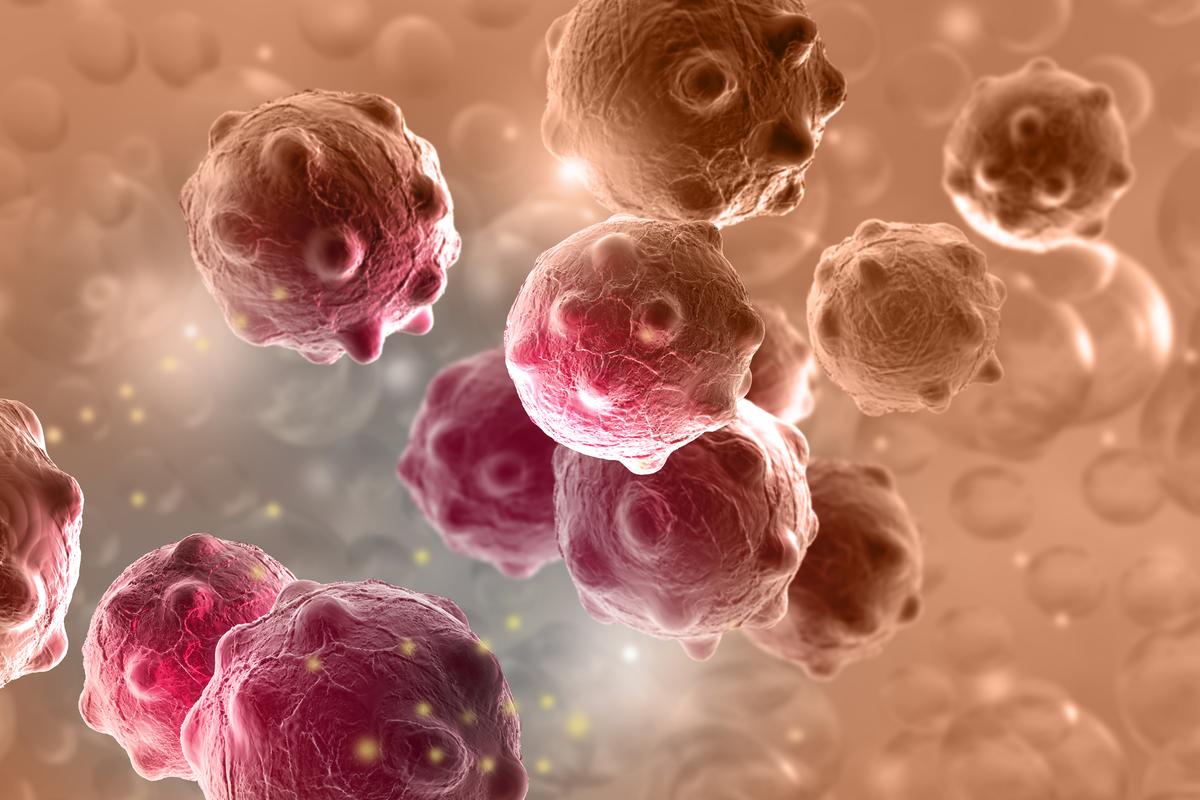
“limiting glucose supply is probably one of the most important methods for tumor suppression”
“Scientists have made an important discovery around how brown fat can hamper tumor growth through glucose metabolism Depositphotos Scientists investigating the way a certain type of fat behaves in response to cold have made a discovery that could have ramifications for cancer treatment. The breakthrough centers on the way the body metabolizes glucose, and hints at the possibility that chilly temperatures can help starve tumor cells of a vital fuel source they need to thrive.
The research was carried out by scientists at Sweden’s Karolinska Institutet and focuses on what’s known as brown fat . Distinct from the persistent white fat that stores extra energy as lipids to form love handles and beer bellies, brown fat readily burns away energy to keep the body warm in colder temperatures.
The thinking behind this new study was to explore the way activation of brown fat may impact on tumor growth, which relies heavily on glucose. The experiments began with mouse models of various cancers, with the rodents exposed to both cold and warm temperatures. Mice kept at 4 °C (39.2 °F) exhibited far slower tumor growth and lived nearly twice as long as mice living in rooms at 30 °C (86 °F).
Analysis of tissues, cellular reactions and glucose metabolism showed that the colder temperatures drove significant uptake in glucose in the brown fat tissue. Meanwhile, glucose signals could barely be detected in the tumor cells. Follow up experiments in which the scientists removed the brown fat or hampered its function essentially eliminated the cancer-fighting effects of the cold temperature exposure and enabled the tumors to grow at normal pace. Feeding the mice sugary drinks had a similar effect.
“Interestingly, high sugar drinks seem to cancel out the effect of cold temperatures on cancer cells, suggesting that limiting glucose supply is probably one of the most important methods for tumor suppression,” says study author Professor Yihai Cao.
The team did find some evidence that similar effects could be at play in humans. Subsequent experiments involving a small group of healthy subjects and one cancer patient produced similar results, with lower glucose uptake observed in tumor cells at lower temperatures, of around 22 °C (71.6 °F).
“We found that cold-activated brown adipose tissue competes against tumors for glucose and can help inhibit tumor growth in mice,” said Cao. “Our findings suggest that cold exposure could be a promising novel approach to cancer therapy, although this needs to be validated in larger clinical studies.”
The research was published in the journal Nature .
Study: Strawberries can help protect against brain inflammation and Alzheimer’s

( Natural News ) Strawberries are nutritious and they are full of beneficial antioxidants and plant compounds. According to a study, consuming strawberries can also help protect the brain from Alzheimer’s disease by reducing inflammation .
The study was published in the Journal of Alzheimer’s Disease .
In the study, researchers from Rush University in Chicago, Illinois, discovered that adults older than 65 who regularly consumed strawberries had fewer tau proteins in their brains. Higher concentrations of tau proteins are linked to Alzheimer’s. Strawberries, brain health and Alzheimer’s
For the study, the research team examined the brains of 575 deceased patients with an average age of 91 years. None of the patients had Alzheimer’s disease .
For more than two decades before their deaths, each participant answered an annual survey about their diet. The researchers used the survey results to keep track of the patients’ diets.
The patients also had their cognitive ability tested annually. Results from an autopsy revealed that the group that consumed the most strawberries had the lowest concentration of tau proteins.
The researchers reported that they did not find any link between tau protein levels and those who had the APOE-4 gene, which is believed to raise the risk of Alzheimer’s.
Dr. Julie Schneider, the neuropathologist who led the study, explained that the research team suspects the anti-inflammatory properties of pelargonidin — an active compound in strawberries — may decrease overall neuroinflammation, which may reduce cytokine production.
Cytokines are proteins produced by cells that can trigger an inflammatory response. (Related: Study: Consuming apples, oranges and strawberries can help people with Parkinson’s disease live longer .)
Inflammation in the brain may be caused by many factors such as infections, extreme stress and a lack of sleep. These are also risk factors for developing Alzheimer’s .
Dr. Puja Agarwal, a nutritional epidemiologist who was also involved in the research, advised that eating strawberries is a “simple change” that anyone could make to their regular diet. However, he acknowledged that the study was observational, meaning it wasn’t clear whether the strawberries themselves reduced the risk.
Agarwal said that further research is needed to learn more about the role of nutrition in Alzheimer’s, but the study findings suggest that certain dietary components, like berries, may offer significant benefits for brain health .
Alzheimer’s disease is a debilitating condition affecting over 6.5 million Americans. By 2050, this figure is expected to more than double. Early signs of Alzheimer’s include difficulties remembering recent events or conversations or where something was left.
In the last stages of the disease, people with Alzheimer’s might repeat themselves or questions over and over. They can also get lost even in familiar places and have trouble finding the right words to identify common objects. Health benefits of strawberries
Strawberries are one of the top sources of pelargonidin, a compound that is believed to be an anti-inflammatory. Other sources of pelargonidin include kidney beans, plums, radishes and raspberries.
Strawberry ( Fragaria ananassa ) is a hybrid of two wild strawberry species from North America and Chile. These berries are bright red, juicy and sweet.
Strawberries are full of vitamin C and manganese . They also contain decent amounts of folate or vitamin B9 and potassium.
Strawberries are full of antioxidants and plant compounds, which are believed to offer benefits for heart health and blood sugar control. Healthy strawberry desserts to try
Following a balanced diet is key to your overall health. Eat lots of nutritious foods like strawberries and try some of the healthy recipes below.
Strawberry oatmeal bars
Instead of buying oatmeal or granola bars, make strawberry oatmeal bars at home using fresh ingredients and none of the added preservatives often used in store-bought oatmeal bars.
Ingredients for 16 strawberry bars: 1 cup old-fashioned rolled oats (Use gluten-free oats if preferred.)
2 cups strawberries (about 10 ounces), diced small and divided
3/4 cup white whole wheat flour (Use 1:1 baking flour to make gluten-free bars.)
1/3 cup light brown sugar
6 tablespoons unsalted butter, melted (For vegan/dairy-free bars, use melted coconut oil.) 1 tablespoon freshly squeezed lemon juice from about 1/2 small lemon 1 tablespoon granulated sugar divided 1/4 teaspoon ground ginger 1/4 teaspoon kosher salt 1 teaspoon cornstarch Ingredients for the vanilla glaze (optional if you prefer a sweeter bar): 1/2 cup powdered sugar sifted 1 tablespoon milk 1/2 teaspoon pure vanilla extract Preparation: > Place a rack in the center of the oven and preheat to 375 F. Line an 8×8-inch baking pan with parchment paper. Let the paper overhang from two sides like makeshift handles. In a medium bowl, combine the oats, flour, brown sugar, ginger and salt. Pour the melted butter into the oat mixture and stir until it forms clumps and all the dry ingredients are evenly moistened. Set aside 1/2 cup of the crumble mixture. Press the rest into an even layer at the bottom of the pan with parchment paper. Scatter half of the sliced strawberries over the crust. Sprinkle the cornstarch evenly over the top, then sprinkle the lemon juice followed by the half a tablespoon of the granulated sugar. Scatter the remaining berries over the crust, then the remaining half a tablespoon of the sugar. Sprinkle the reserved crumbs evenly over the top. You should have some fruit showing through. Bake the bars for 35 to 40 minutes. The bars are done when the fruit is bubbly and the crumb topping smells toasty and turns golden. Place the pan on a wire rack to cool completely. Speed up this process by refrigerating the pan. Prepare the glaze. In a medium bowl, briskly whisk together the powdered sugar, vanilla and milk. Whisk until the mixture is smooth. Add more milk if you want a thinner consistency. Use the parchment-paper “handles” to lift the bars from the pan. Drizzle with glaze and slice before serving. Blueberry-strawberry smoothie bowl Start your day with a tasty and nutritious blueberry-strawberry smoothie bowl . Ingredients for 1 serving: 1 cup ice cubes 3/4 cup fresh blueberries , divided 1/2 cup fresh strawberries, sliced 1/3 cup 2% […]
Here’s why eating a colorful diet is important for your overall health

( Natural News ) If you’re struggling to follow a balanced diet, you can try “eating the rainbow.” This means you need to make sure your meals contain a wide variety of nutritious and colorful fruits and veggies .
Every color provides specific protection for plants. According to studies, humans receive similar benefits from eating colorful vegetables and fruit . Red fruits and vegetables
Red vegetables and fruits contain a variety of phytochemicals such as lycopene . Data shows that superfoods rich in lycopene can help protect against heart disease and some cancers, like prostate cancer.
Foods rich in lycopene include guava, papaya, pink grapefruit, watermelon and tomatoes. Tomato-based products like spaghetti sauce, tomato juice, tomato paste and tomato soup also contain lycopene.
When cooking tomato-based products, use a small amount of fat like olive oil to help your body absorb lycopene.
Here are some nutritious red fruits and vegetables to add to your regular diet: Beets
Cherries
Chili peppers
Radishes
Raspberries
Red Apples
Red cabbage
Red grapes
Red onion
Red peppers
Red potatoes
Rhubarb
Strawberries
Tomatoes
Watermelon
Orange and yellow fruits and vegetables
Orange and yellow fruits and vegetables contain powerful antioxidants like vitamin C, along with bioflavonoids, carotenoids and phytochemicals.
Deep orange fruits and veggies contain beta-carotene , a disease-fighting antioxidant. According to research, beta-carotene may have a role in reducing cancer and heart disease risk. Beta-carotene can also help boost your immune system, promote good eyesight and slow the aging process.
Add these tasty and healthy orange and yellow fruits and vegetables to your regular diet: Apricots
Butternut squash
Cantaloupe Carrots Corn Grapefruit Lemons Mangoes Nectarines Oranges Papaya Peaches Pineapples Pumpkin Yellow apples Yellow peppers Yellow raisins Green fruits and vegetables Green vegetables are full of powerful phytochemicals like lutein and indoles. Leafy green veggies are full of chlorophyll, an energizing and alkalizing compound.Eat lots of green fruits and vegetables such as: Artichokes Asian greens Asparagus Avocados Broccoli Brussels sprouts Celery Cucumbers Green apples Green beans Green cabbage Green grapes Kiwi Leeks Limes Okra Pears Peas Spinach Zucchini Lutein is a potent antioxidant and data says it can help protect your eyes and maintain good vision.These nutritious green fruits and vegetables are rich in lutein: Broccoli Collards Green peas Honeydew melon Kale Kiwi fruit Romaine lettuce and other leafy green vegetables Spinach According to research, indoles can help fight against some cancers like breast and prostate cancer.These superfoods are rich in indoles: Arugula Bok choy Broccoli Brussels sprouts Cabbage Cauliflower Kale Rutabaga Swiss chard Turnips Watercress Blue and purple fruits and veggies Blue and purple fruits and veggies contain anthocyanins and vitamins and minerals like fiber, manganese, potassium and vitamins B6, C and K1.Blue and purple fruits and veggies are anti-inflammatory and antioxidant. They can help boost your heart health and lower your risk of neurological disorders.Additionally, blue and purple superfoods can help boost brain function and lower your risk of Type 2 diabetes and certain cancers.Here are some blue and purple superfoods to add to your diet: Blueberries Blackberries Concord grapes Eggplant Elderberries Red/purple cabbage Plums Dark red fruits and veggies Dark red fruits and veggies contain phytonutrients like betalains and vitamins and minerals such as fiber, folate, magnesium, manganese, potassium and vitamin B6.Dark red fruits and veggies are anti-inflammatory and antioxidant and they can help lower your risk of high blood pressure . These superfoods can also help boost your heart health, lower your risk of certain cancers and support athletic performance through increased oxygen uptake.Eat dark red fruits and veggies like beets and prickly pears. White and brown fruits and veggies White and brown fruits and veggies aren’t as eye-catching as the other superfoods in these lists, but they contain phytonutrients like anthoxanthins (such as flavonols and flavones) and allicin.They also contain vitamins and minerals like fiber, folate, magnesium, manganese, potassium and vitamins B6 and K1.Veggies like garlic and mushroom are anti-inflammatory and antioxidant. They can also help reduce your risk of colon and other cancers and boost your heart health.Eat more of these brown and white fruits and veggies: Cauliflower Daikon radish Garlic Leeks Mushrooms Onions Parsnips White potatoes Follow a colorful diet to boost your overall health.Watch the video below to learn how to make cucumber, tomato and avocado salad . No compatible source was found for this media. More related stories: 4 Health benefits of cinnamon, a powerful spice that can help reduce blood sugar levels . Study: Consuming apples, oranges and strawberries can help people with Parkinson’s disease live longer . 10 Superfood sources of biotin to help boost your overall health . Sources include: Taste.com.au 1 Taste.com.au 2 EatingWell.com 1 EatingWell.com 2 TasteOfHome.com 1 TasteOfHome.com 2
Anthocyanins in fruits like blueberries can boost brain and heart health
( Natural News ) A study published in Nutrients reported that anthocyanins, the blue or purple pigments in fruits such as blueberries, can help boost cognitive and cardiovascular health .
The authors of the study evaluated the benefits of anthocyanins on cardiovascular and neurodegenerative diseases. They concluded that water-soluble phytochemicals can help maintain cardiovascular and brain health by reducing oxidative stress in humans . Oxidative stress occurs when there is an imbalance of free radicals and antioxidants in the body, which plays a role in the aging process.
Normal activities such as exercise may increase the risk of oxidative stress . Free radicals created by less benign factors, including obesity, diets high in fat, sugar and processed foods, exposure to radiation, smoking cigarettes or other tobacco products, alcohol consumption, certain medications, pollution and exposure to pesticides or industrial chemicals, may also add to oxidative stress.
The study makes for a promising non-toxic and natural intervention that can help preserve cognitive function and delay the onset of neurodegenerative diseases. The said phytochemicals are a great alternative to pharmaceutical drugs that address Alzheimer’s disease and feature toxic side effects.
Recent reports said around six million Americans are currently living with Alzheimer’s disease, a progressive neurologic disorder that causes the brain to shrink and brain cells to die. Experts say that every five years after a person reaches the age of 65, the risk of this brain illness doubles. Around 14 million Americans are expected to be diagnosed with the disease by the year 2060. Studies: Anthocyanins are life-prolonging phytonutrients
Over the years, the health benefits of anthocyanins have been widely looked into and the list goes on and on over time. In addition to the promising effects on people with Alzheimer’s, anthocyanins have already become a topic of interest as a natural preventive and therapeutic treatment for other neurodegenerative diseases. (Related: Berry good: Researchers discover lifespan-extending compound in blueberries .)
Scientists report that they have the ability to decrease pro-inflammatory chemicals in the brain and modulate cell signaling pathways. Evidence has also been found that anthocyanins may help inhibit acetylcholinesterase, a brain chemical that breaks down acetylcholine, a neurotransmitter needed for memory and learning.
A study published in the European Journal of Nutrition also revealed that older adults with mild to moderate dementia who drank anthocyanin-rich cherry juice daily showed improvements in memory and speech . Many natural health experts believe that blueberries and other bluish-purplish foods have the “right stuff” to help preserve cognitive function in old age and slow the onset of devastating neurodegenerative diseases.
The said antioxidant cay also help in preventing cardiovascular ailments .
The research team of the 2021 study noted that cyanidin 3, a natural organic compound and a particular type of anthocyanidin, helps to fight endothelial inflammation that can trigger heart disease. This compound safeguards the nitric oxide while appearing to make blood platelets less sticky. This allows for freer flow of circulation through arteries that would keep the blood vessels clear and healthy.
The team cited one placebo-controlled study where 150 participants with high cholesterol were given 320 milligrams per day of anthocyanins for 24 weeks. The respondents experienced reduced levels of C-reactive protein, an inflammatory enzyme linked to heart disease.
Meanwhile, another study published in Nutrition, Metabolic and Cardiovascular Diseases found that anthocyanins were shown to improve cholesterol levels. Moreover, Cleveland Clinic acknowledged that the unique compound can reduce cholesterol, lower blood pressure and decrease cardiovascular inflammation.
Most people get anthocyanins through blueberries and other berries, but they can also be obtained through grapes, black beans, blue or purple corn, cabbage, dark cherries, plums and eggplant skins.
Visit BrainHealthBoost.com for more news related to foods that can boost brain health.
Watch the below video that talks about how anthocyanins can treat insulin resistance and manage cholesterol . No compatible source was found for this media. More related stories:
Research shows eating berries can help reduce inflammation and health risks caused by obesity .
Study: Cherries can help fight heart disease, diabetes and other inflammatory diseases .
Polyphenols in acai found to have a prebiotic effect that boosts digestive health . Sources include:
NCBI.NLM.NIH.gov
NaturalHealth365.com
PubMed.NCBI.NLM.NIH.gov
